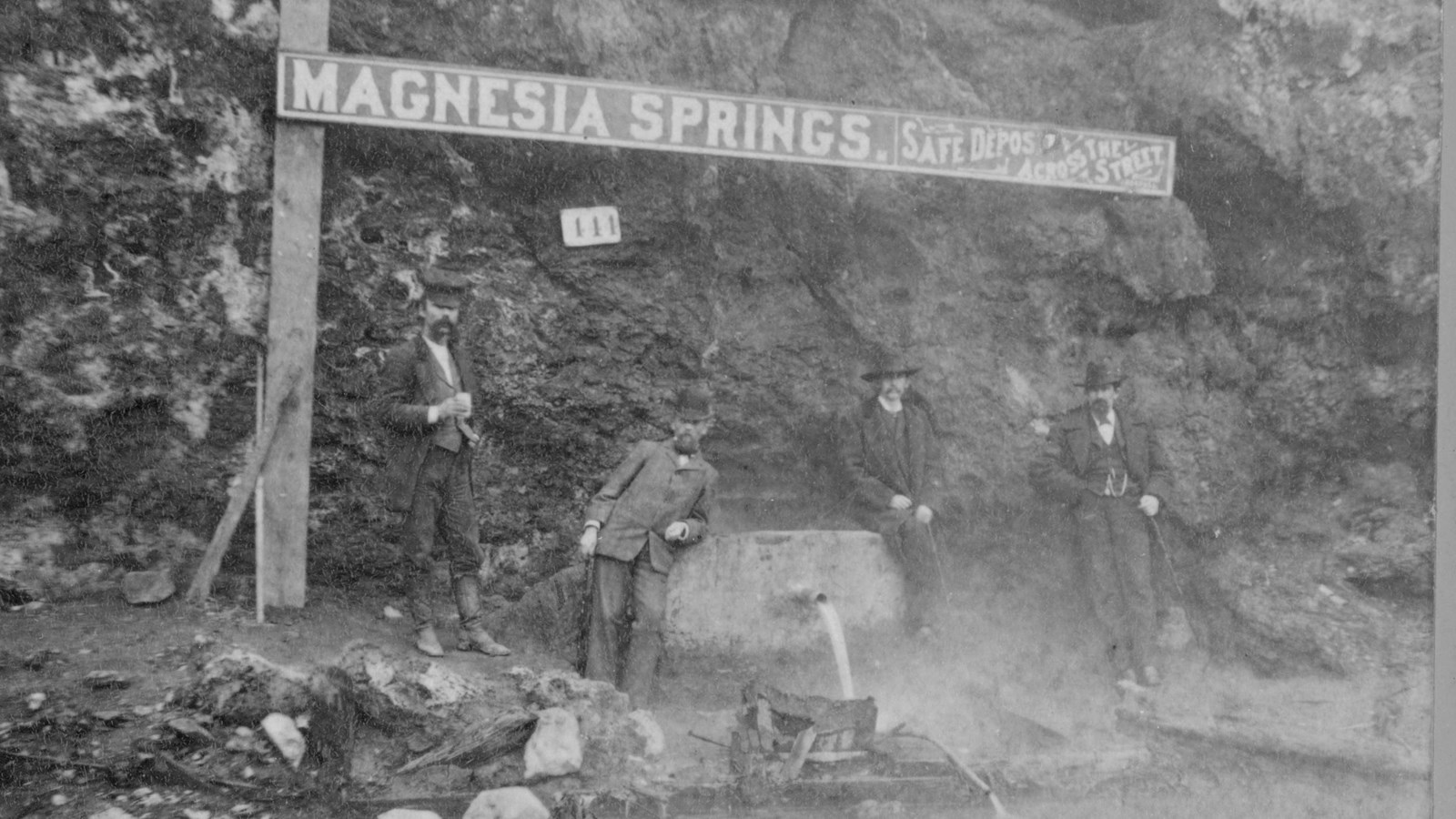Last updated: December 14, 2022
Place
Magnesia Spring

NPS/Archives
Quick Facts
Location:
Hot Springs, AR
Significance:
Magnesia Spring was one of the larger thermal water sources along Hot Springs Creek, and often used for drinking and by visitors for posing for photographs.
OPEN TO PUBLIC:
No
Magnesia Spring historically flowed from the east bank of Hot Springs Creek, at the base of a 20-foot-high tufa cliff. Visitors could access the spring by crossing a plank laid across the creek. In 1901, the water measured 137 degrees, and flowed at 35 gallons a minute.
Because of its location along Hot Springs Creek, Magnesia Spring was heavily influenced by the development of Bathhouse Row. Developers piped water from Magnesia Spring to the Rammelsburg Bathhouse (site of the current Buckstaff Bathhouse). In the 1880s, blasting into nearby rock—both to locate water sources and to build the bathhouses on the east side of Hot Springs Creek—resulted in a decrease in flow of the Magnesia Spring.
A bathhouse investor leased the spring of the spring in the late 1880s to construct a bathhouse, which he called Magnesia Bathhouse. The Quapaw Bathhouse, built in 1922 to replace Magnesia Bathhouse with a much larger and more modern bathhouse, now sits over the location of Magnesia Spring.
Because of its location along Hot Springs Creek, Magnesia Spring was heavily influenced by the development of Bathhouse Row. Developers piped water from Magnesia Spring to the Rammelsburg Bathhouse (site of the current Buckstaff Bathhouse). In the 1880s, blasting into nearby rock—both to locate water sources and to build the bathhouses on the east side of Hot Springs Creek—resulted in a decrease in flow of the Magnesia Spring.
A bathhouse investor leased the spring of the spring in the late 1880s to construct a bathhouse, which he called Magnesia Bathhouse. The Quapaw Bathhouse, built in 1922 to replace Magnesia Bathhouse with a much larger and more modern bathhouse, now sits over the location of Magnesia Spring.
